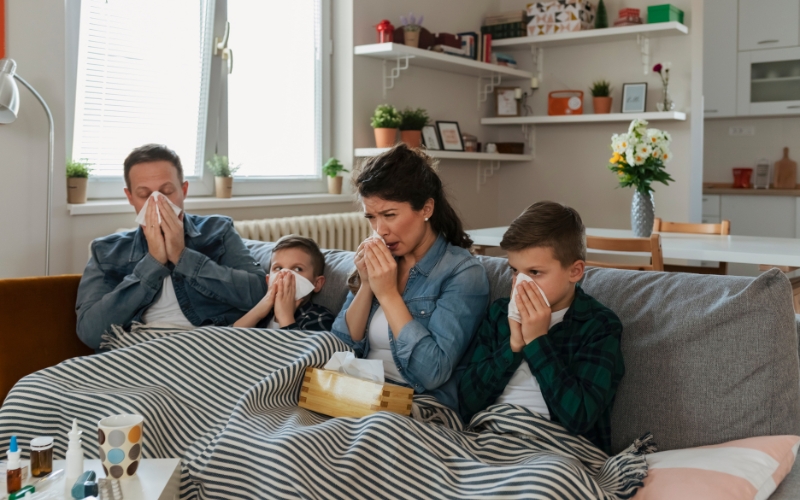New research reinforces a connection that healthcare professionals and caregivers can no longer ignore: the quality of the air we breathe is directly linked to cognitive health, especially in older adults. A recent article from Facilitate Magazine highlights a growing body of evidence suggesting that air pollution exposure can significantly impair brain function and accelerate cognitive decline in aging populations.
As long-term care facilities continue to serve one of the most vulnerable demographics, this raises a critical question: is the air inside these buildings helping or harming residents?
Air Pollution and Brain Health: A Troubling Link
The Facilitate Magazine article cites new fidnings that show how long-term exposure to fine particulate matter (PM2.5), nitrogen dioxide (NO2), and other pollutants can deteriorate brain function in older adults, even at levels previously considered safe. These effects are particularly concerning in long-term care environments, where residents may already by experiencing cognitive challenges related to aging or conditions like dementia and Alzheimer’s disease.
In other words, poor indoor air quality isn’t just a respiratory issue—it’s a neurological one.
Indoor vs. Outdoor Air: The Overlooked Gap
It’s tempting to assume that indoor air offers a safe haven from the pollutants outdoors. But that assumption doesn’t hold up in many healthcare settings. In fact, indoor air can often be more polluted than outdoor air due to inadequate ventilation, cleaning chemicals, mold growth, and the constant movement of staff and visitors who may carry contaminants inside.
That’s why attention to air quality in long-term care facilities must extend beyond basic HVAC upgrades or filtration. It requires a comprehensive, scientifically validated approach.
Real-World Evidence: The Role of DHP Technology
A recent peer-reviewed study published in the American Journal of Infection Control offers encouraging news. Conducted in a long-term care facility, the study evaluated the impact of Synexis’ patented Dry Hydrogen Peroxide (DHP®) technology on indoor microbial levels.
The results were significant: across multiple testing periods, microbial counts on surfaces and in the air were substantially reduced in the presence of DHP.
Similarly, volatile organic compounds (VOCs) were also significantly reduced. VOCs are chemical compounds that can come from synthetic products such as gasoline, paint, glue, and adhesives or human sources such as urine, feces, and other bodily secretions and excretions. Some of these can cause mild irritation at low levels and significant organ damage, including memory impairment at high levels.
The technology functioned continuously, reducing airborne pathogens and VOCs without disrupting daily operations or requiring chemical sprays.
While the study focused primarily on microbial contamination and VOCs, the implications are broader. Lowering the microbial load and VOCs in indoor air can support immune function and contribute to overall wellness, while reducing the microbial load can also mitigate infection risks. Collectively, these reductions create a safer, healthier environment for residents and staff alike.
What This Means for Care Providers
Taken together, these studies underscore the urgent need to prioritize air quality in long-term care facilities. Cognitive health, immune health, and infection control are all intertwined—and air is the invisible thread connecting them.
Facility managers and healthcare administrators should consider an integrated strategy that includes:
- Routine indoor air monitoring
- Engineering controls beyond basic filtration (e.g., microbial reduction)
- Continuous, passive technologies like DHP that reduce pathogens in real time
- Staff education on indoor air quality best practices
A Proactive Path Forward
Caring for aging adults is about more than managing medications and mobility. It’s about creating an environment that supports whole-person health—including the air they breathe. And as the science continues to evolve, so too must our approach to maintaining safe and healthy spaces.
Air quality in long-term care facilities isn’t a background issue anymore—it’s central to resident outcomes.
To speak with an IAQ expert from Synexis, fill out this form and we’ll be in touch as soon as possible.
And to learn more about Synexis, click here.








